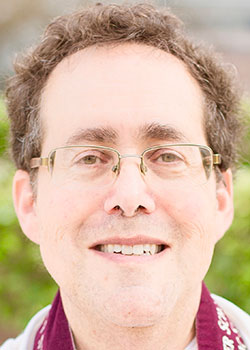The calendar of the Jewish holidays is an introductory course in Jewish theology and history, complete in itself. Through the cycles of holy days, festivals, memorials and fast days – all rich with traditions, readings, meditations and rituals – a Jew can become familiar with the basic values, beliefs and history which have sustained us as a people.
One celebration which used to be quite prominent in Biblical times has been relegated to a place of lesser prominence in post-Biblical practice, and it deserves another look: Rosh Hodesh, the New Moon.
In Parashat Pinhas, the festivals of the calendar are detailed at length. Particular attention is given to the sacrifices offered on each day. What is noteworthy in that regard is that Rosh Hodesh gets the same number of offerings as the other major sacred occasions – a sure sign that it was of equal importance to those other holy times.
To understand the context in which Rosh Hodesh was so important, it is worth recalling the place of the moon in ancient pagan religions. For many of them, the moon represented a powerful goddess, whose worship often effected fertility and sustenance. In a world in which people worshiped nature as though it were divine (pantheism or, in modern guise, transnaturalism), the moon was an attractive and frightening divinity.
The genius of traditional Judaism was to refashion (rather than flatly reject) those powerful symbols, making clear that divinity did not inhere in nature or in simple being, but was a constant gift of the God who was and is the source of nature and of life.
How the Torah and rabbinic Judaism made a place for the moon speaks a great deal for their gifted understanding of the human heart and their masterful ability as teachers and counselors.
Rather than reject all religion in connection to the moon, the Torah does mark the New Moon as a significant occasion, one in which the people of Israel gathered and praised the God who fashioned the sun, the moon, the stars and other astral bodies. In short, rather than seeing the moon as a marvel in its own right, it – like all inanimate objects – is significant as a sign of God’s steadfast love and creative bounty.
In that regard, the Torah offers a fascinating hint, calling for the offering of “one goat as a sin offering to the Lord.” That expression occurs for no other festival, anywhere else in the entire Torah. Why does it have to be here?
The answer is found in the Rambam’s Guide for the Perplexed, where he writes that “as it was apprehended that the hegoat offered on the New Moon could be imagined to be a sacrifice to the moon … it was explicitly stated that this goat was consecrated to God and not to the moon.”
In other words, what had been pagan ritual was now transformed to meet the purposes of ethical monotheism. The light of the moon now illuminated the riches of Torah and the sovereignty of the Ribbono shel Olam, the Commander of Space/Time. The new phase of the moon became a time to praise God for the reliable cycles of nature.
Thus, on the Shabbat prior to Rosh Hodesh, the synagogue resounds with a prayer that the new month should be marked by love of Torah and the fear of sin. On Rosh Hodesh itself, the congregation chants the Hallel, the ancient collection of praises to God offered by the Levites in King Solomon’s Temple. A few nights later, Jews gather for the ritual of Kiddush Levanah, sanctification in response to the new moon. That ritual consists of reciting a psalm that firmly establishes God as the author of the natural order, noting that the sun, moon and stars do God’s will reliably (and implying that we should too).
In reference to this lovely custom, one Talmudic rabbi claimed that “one who blesses the New Moon is regarded as one who greets the Shekhinah (the face of God).”
Blessings the New Moon is like seeing God’s face, because when Jews gather to bless the moon we do so as an act of fidelity to the God who made the moon, who continues to pour supernal light on the world through the agency of the renewing moon, the rising sun and the glistening stars of the night sky.
Surely that is a celebration worth renewing in our own, troubled and doubting age.
Shabbat shalom.

